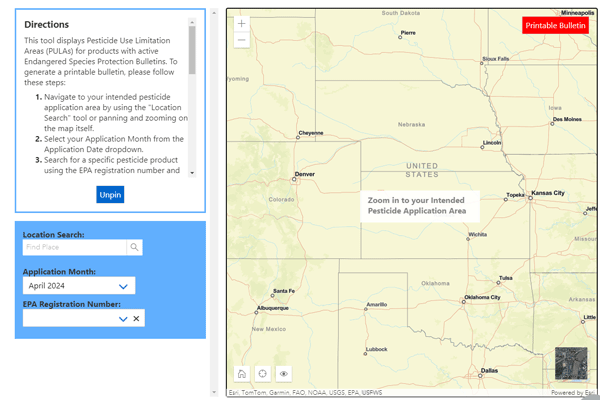The Endangered Species Act (ESA), established in 1973, protects threatened and endangered species and the critical habitats in which they live. This act requires federal agencies to ensure that any action they authorize or fund does not negatively affect any listed species or any critical habitat the organism needs to survive. For the EPA, this means they are required to assess potential risks to these species when they register or reregister a pesticide product. In 1988, the Environmental Protection Agency (EPA) established the Endangered Species Protection Program (ESPP) to meet its obligations under this Act. A lawsuit filed in 2011 alleged that the EPA violated ESA when it registered or reevaluated certain pesticide active ingredients, which is now driving some changes that will affect Kansas producers.
The expected changes are being outlined in the EPA’s herbicide, insecticide, fungicide, and rodenticide strategies, which have not been finalized yet. The strategies aim to minimize the exposure of protected species to pesticides. Many of the new risk mitigation measures outlined in the strategies will apply to all pesticides, but some will be specific to a particular site, product, or application timing.
Because the strategies have not been finalized, there is still a lot of uncertainty, but we know pesticide labels will change. Changes will include additional runoff, erosion, and spray drift reduction measures for many products. In addition, some applications will be affected by Pesticide Use Limitation Areas (PULAs), which will have additional restrictions beyond those listed on the product label. Applicators will need to read Endangered Species Protection Bulletins to determine if a PULA will affect an application.
ESP Bulletins
The Endangered Species Protection Bulletin will identify the species of concern and the pesticide active ingredient that may affect it. It will also provide a description of protection measures necessary to protect the species and a county-level map showing the affected geographic areas.
If the pesticide label directs you to the website “Bulletins Live! Two” or the toll-free number, you are required to follow the pesticide use limitations found in the Bulletin for your location, the pesticide active ingredient, and the application month (Figure 1). You can obtain Bulletins at the website: https://www.epa.gov/endangered-species/bulletins-live-two-view-bulletins or through the toll-free number 844-477-3813. Bulletins should be obtained no more than six months ahead of your application. It is recommended that applicators keep a record of the Bulletins they obtain as part of their application records. Remember, these bulletins will be required for all pesticides, not only restricted-use products.

Figure 1. Screenshot of the tool displaying Pesticide Use Limitation Areas (PULAs) for products with active Endangered Species Protection Bulletins.
As an applicator or producer, now is the time to familiarize yourself with the “Bulletin’s Live! Two” website and how to search, use, and save bulletins. It is important to know the upcoming changes and existing resources that can help you navigate and understand how to comply.
Frannie Miller, Pesticide Safety and IPM Coordinator
fmiller@ksu.edu
Sarah Lancaster, Extension Weed Science Specialist
slancaster@ksu.edu